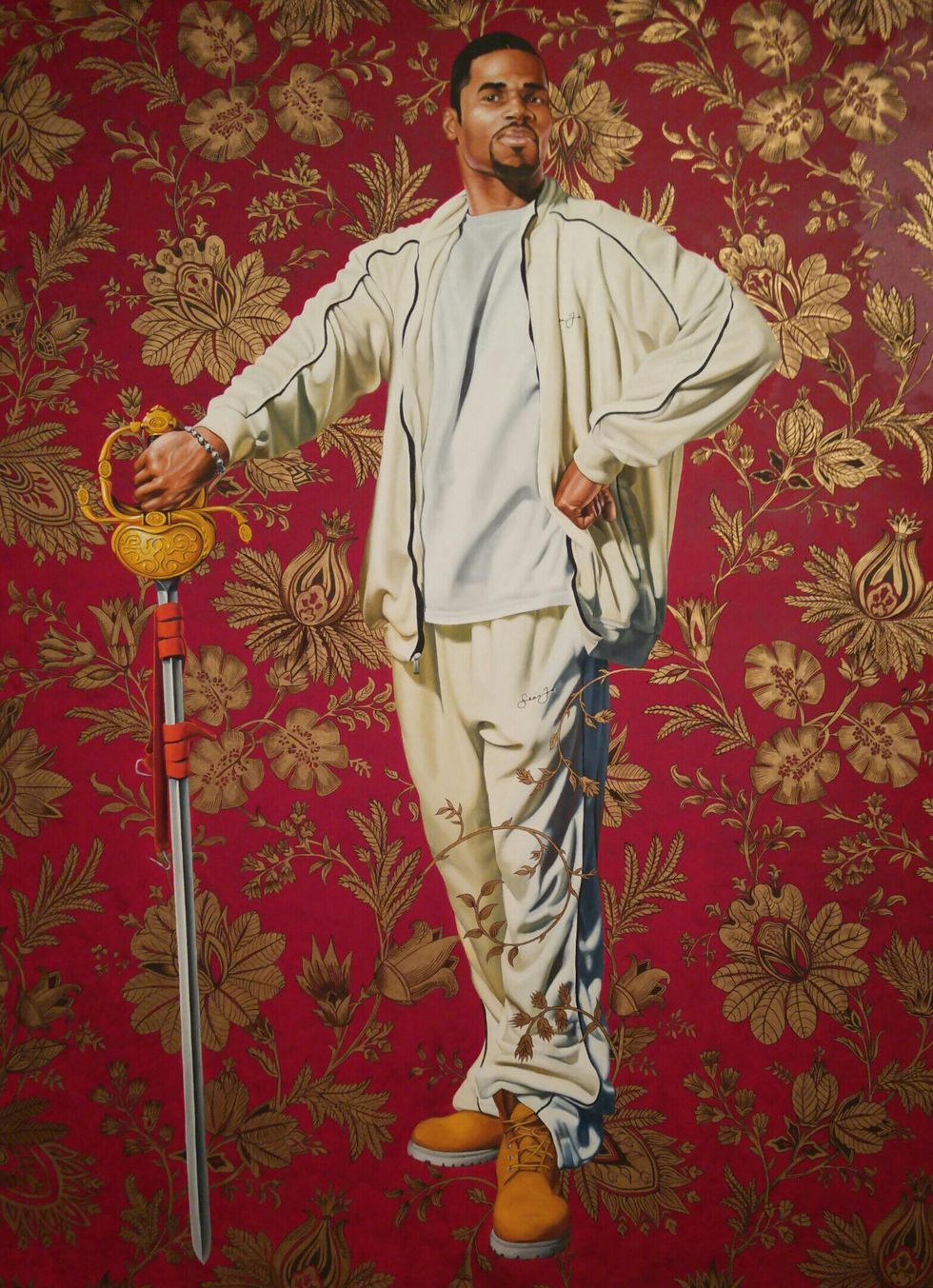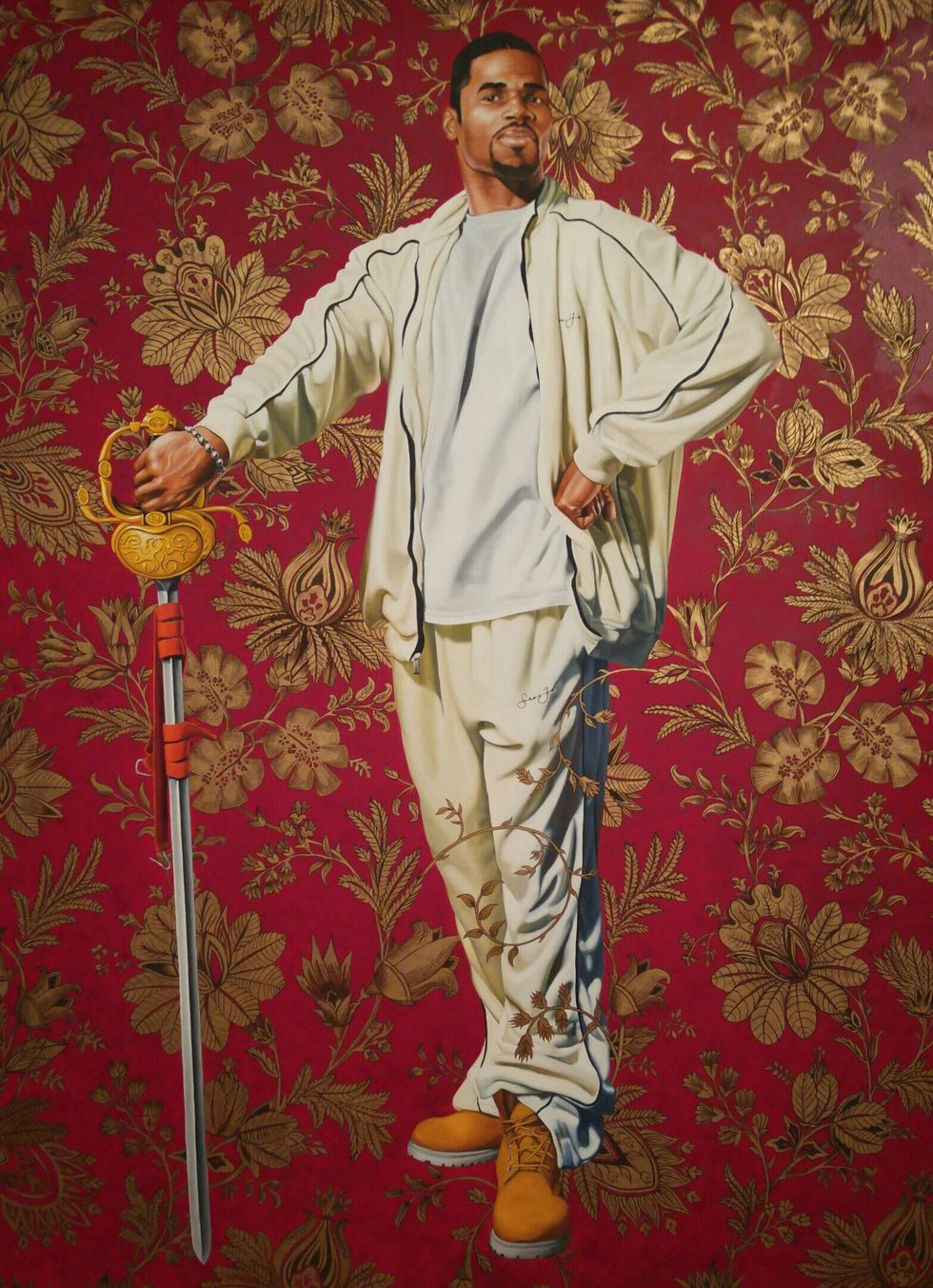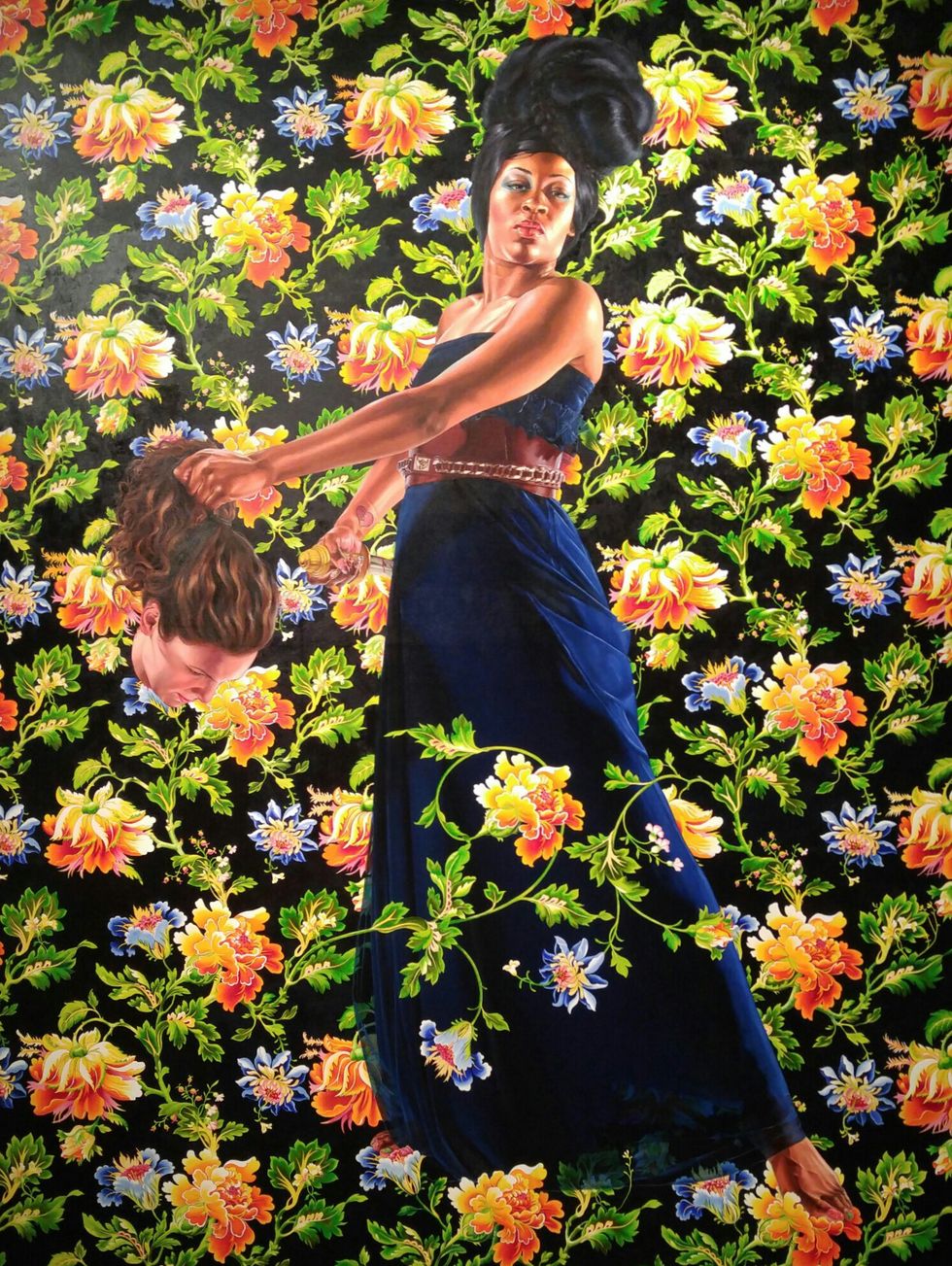"A New Republic" explores questions around race, gender, and representation by showing African American women and men in traditional European portraiture but with very contemporary and hip-hop influenced designs. We will explore the beauty of these paintings and why the public should listen. With the Black Lives Matter Movement, Beyonce’s "Formation" video, and countless of other waves in the media, Kehinde Wiley takes a stab at this white colonial lens of art history and forces us to consider the alternative.
Most people have learned or remember what it was like to take an Art History course. Some remember famous names such Picasso, Bernini, Michelangelo and the great Sistine Chapel. However, few can recall what the makings of art was like outside of those European confines. Kehinde Wiley, an artist from New York and Beijing, dares to explore an alternative reality, and some would argue the real reality. Wiley places minorities, specifically women and men of African origin, into classical European paintings. The effect is sensational.
Let’s take a look at one piece from Wiley’s exhibition titled Willem Van Heythuysen. This portrait was originally depicting a man of white European privilege and power from Holland’s golden age of painting in 1625, posing elegantly with a golden blade to symbolize his strength. Wiley takes a similar approach by inserting an African American man that you might pass by on the street. Popping from a crimson and golden leaved background, a design trademark in the other pieces of "A New Republic", this gentleman is garbed in some comfortable white sweats, t-shirt and matching jacket, and rocking some golden kicks. Pouring off swagger and power as he looks us dead in the eye, with a slightly raised chin and refined composure. Almost daring you to question his own strength and power, with that golden sword and assertive dominant posture of hand on hip. That is Wiley’s ultimate message and motivation behind "A New Republic"; The viewer is supposed to notice how a subject’s gestures, pose, dress, and gaze communicate identity, class, power, and authority. Beyond showcasing man’s prowess and aggression, Wiley further explores these ideals of beauty with women.
Another portion from Wiley’s exhibition features African American Women in these breathtaking positions. One such piece, perhaps the most direct, aggressive, and beautiful, is titled Judith and Holofernes. The beheading of Holofernes by Judith was given in the Book of Judith, and was portrayed many times in painting and sculpture during the Renaissance and Baroque periods. A tale of a woman taking power over a man, would often portray the woman as a menacing and deadly. Here, Wiley inserts upon a garden-like background a powerful African American woman, her dark locks tightly bundled and garbed in a midnight blue gown. In her left hand, swinging slightly in front of her, we see the decapitated head, not of a man or Holofernes, but of a white woman. A golden blade peaks out behind the beheaded, tightly shifted down, like the blade is awaiting another stab. The woman holds the head almost proudly, powerful and supreme. This shows Wiley’s ability and appreciation for the power of a woman is branded into the eyes of the viewer, for how can you not see the paradigm shifting?
"A New Republic" absolutely tears apart any and all depictions of refined art and replaces it with a true reality. A reality that echoes not only the past, but the present as well. In recent news stories, we have seen the Black Lives Matter Movement, Beyonce’s "Formation" music video, and various marches and rallies in between that have called for the world to pay attention. The voices of that demographic as represented in "A New Republic" are strong and even more powerful, radiant, vibrant, and beautiful than what history has depicted of white privilege. Wiley challenges these long-held assumptions by opening new doors of perception, offering unprecedented interpretation and re-imaging the black figure as a subject, object, and agent of power and virtue. The message is undeniable and refreshing in the world of art.
Judith and Holofernes























